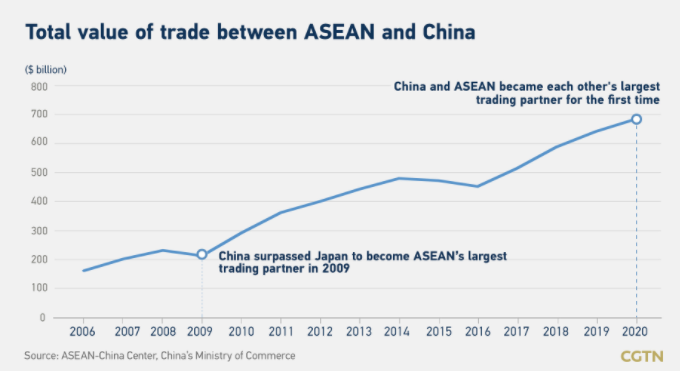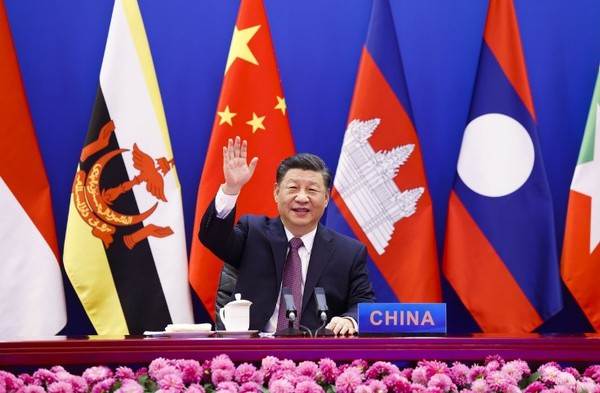
By Ms. Maryam Raza, Deputy Director,
Pakistan Research Center for a Community with Shared Future,
Communication University of China (Beijing), China

The 21st Century C.E. is the era of ‘’Regionalism’’ or ‘’Regionalization’’. In contemporary times, multilateral cooperative frameworks or supranational platforms allow states to resolve their disputes and find more avenues for joint ventures. Through multilateralism, inclusive economic integration has become a key indicator for geo-political strength, regional stability, and wider connectivity. In this aspect, China always supports the strong foundation of such institution and is aligned with many regional or international platforms. China has a grand motive to build a community with a shared future for mankind and facilitate dialogue among civilizations to resolve differences and strive towards common goals. Under the dynamic leadership of His Excellency President Xi Jinping, the country has been successfully moving towards its great goal of rejuvenation and cooperation for shared prosperity. Being a core of the Communist Party of China (CPC), President Xi has become the most popular statesman in the world because of his exceptional strategies and projects.

The Association of Southeast Asian Nations (ASEAN) is an exclusive model for extensive collaboration.It is a front runner and potentially enhances the socio-economic development of Asia-Pacific regional countries and multilateral cooperation. The year 2021 marked the 30th anniversary of fruitful dialogue relations between China and the Association of Southeast Asian Nations (ASEAN). China-ASEAN cooperation in various fields is a clear manifestation of successful and vibrant relationship in the Asia Pacific. His Excellency President Xi Jinping has recently announced the establishment of the ‘’China-ASEAN Comprehensive Strategic Partnership’’.He made the announcement while chairing the Special Summit to Commemorate the 30th Anniversary of China-ASEAN Dialogue Relations via a video link in Beijing. This milestone development would provide a new impetus to peace, stability, cooperation, prosperity and a shared future to the region. China-ASEAN dialogue relations have gone through an extraordinary journey over the past three decades. These 30 years have witnessed extensive development of economic globalization and profound changes in the international landscape.
China-ASEAN Trade and Economic Cooperation: Frameworks and Achievements
Trade between China and the ASEAN has skyrocketed by 85 times since the two sides established their dialogue relations in 1991. China has remained ASEAN's largest trading partner for 12 consecutive years, while in 2020, ASEAN also became China's largest trading partner.


President Xi, in his speech, highlighted the exceptional relationship between ASEAN and China. The last 30 years have also seen China and ASEAN seizing opportunities of the times and achieving significant development in bilateral relations. They have spearheaded economic integration in East Asia, promoted common development and prosperity, and delivered better lives to over two billion people. The relationship has explored a bright path of good-neighbourliness and win-win cooperation, taken strides toward building a closer community with a shared future and made an important contribution to the cause of human progress. Some milestone developments in the last 30 years are as follows:
Framework agreement on China-ASEAN Comprehensive Economic Cooperation (2002)
Agreement on the trade and goods of the China-ASEAN Free Trade Area (FTA- 2004)
Agreement on Investment (2009)
China-ASEAN FTA fully completed (2010)
First-round of China-ASEAN FTA upgrading negotiation (2014)
China-ASEAN FTA upgrading protocol (2015)
Regional Comprehensive Economic Partnership (RCEP) signed by 15 participant countries, including China and ASEAN states (2020)
China’s assistance to fight against the Covid-19 Pandemic:
In this tough time of the pandemic, China has helped many countries around the world with vaccinations, medical assistance and financial support. China has also been helping ASEAN countries to fight against the Coronavirus. China had provided ASEAN member states with over 300 million doses of COVID-19 vaccines and a large quantity of emergency medical supplies, besides sending teamsof medical experts to help build virus-testing labs and work on vaccine trials with several ASEAN countries.
China takes ASEAN as a high priority in its neighbour diplomacy for shared future. It reflects the common values of humanity and finds the greatest common ground to build a better world. The aim of building a global community with shared future is neither to promote the unilateral propositions of one or a few cultures nor to seek to make any country act in the same manner, far less to replace one system or civilization model with another. Instead, it proposes that countries with different social systems, ideologies, historical civilizations and development levels target the same goals, align their interests, and share their rights and responsibilities, to promote the overall development of human society. China always follows a path of peaceful development along with broader regional and global cooperation.
China-ASEAN Comprehensive Strategic Partnership: Prospects and Benefits
This year has marked the 30th anniversary of China-ASEAN relations. Now, this relationship has turned more inclusive by taking a new route towards establishing China-ASEAN Comprehensive Strategic Partnership. The dynamic leadership of China believes that vigilant policies and holistic approaches are required to resolve common perils and build a community with shared future for mankind. In this aspect, President Xi Jinping proposed five major proposals, urging efforts to move toward a closer China-ASEAN community with a shared future and making the region and the world even more prosperous:
i.China supports ASEAN's efforts to build a nuclear weapon-free zone and is ready to sign the Protocol to the Treaty on the Southeast Asia Nuclear Weapon-Free Zone.
ii.China is ready to work with ASEAN countries to build a health shield for the region jointly. Under the initiative, China will donate an additional 150 million doses of the COVID-19 vaccines to ASEAN countries and contribute an additional $5 million to the COVID-19 ASEAN Response Fund.
iii.China emphasized opening a dialogue with ASEAN on climate response. In this aspect, cooperation can be enhanced in the areas of clean energy, green finance and investment, agriculture and marine sustainable development.
iv.China proposed that the two sides must advocate common humanitarian values, promote people-to-people contacts and deepen mutual learning between civilizations.
v.It was also suggested that both sides must ensure regional peace, prosperity and sustainable development.
Conclusion:
This era of regionalism has enabled many evolutionary developments in international relations and shaping foreign policies of countries.Institutional development and communication are the essential pillars for understating each other’s cultures and values. In this aspect, China has remained firm in its decisions and initiatives for global growth. As a Chinese saying goes, ‘’A journey of a thousand miles begins with a single step’’. Therefore, upgrading China-ASEAN Dialogue ties into a Comprehensive Strategic Partnership is the right step in the right direction. The great initiative reflects many new opportunities for regional growth, cooperation and stability.
Edited by ICSF CUC.
To view, kindly visit the following links:
